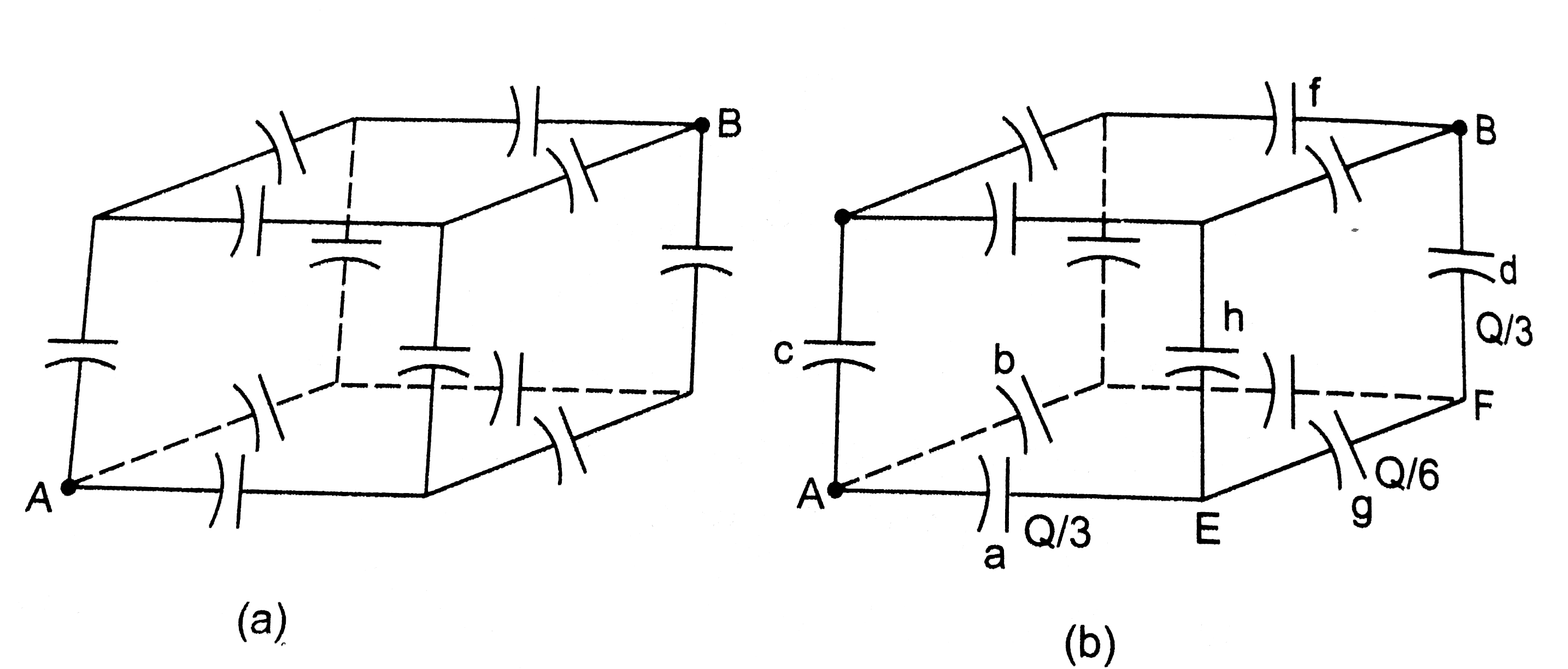(a) State the underlying principle of a potentiometer. Why is it necessary to
(i) use a long wire,
(ii) have uniform area of cross-section of the wire ?
(b) Obtain an expression for equivalent capacitance when three capacitors C1,C2andC3 are connected in series.
Step-by-Step Solution:
1. Definition: A potentiometer is an instrument used to measure the potential difference (voltage) across two points in a circuit.
2. Principle: The underlying principle of a potentiometer is based on the fact that the potential drop across a uniform wire carrying a steady current is directly proportional to its length. This can be mathematically expressed as:
V∝L
where V is the potential difference and L is the length of the wire.
(i) Why is it necessary to use a long wire?
1. Lower Potential Gradient: A longer wire allows for a lower potential gradient (the potential drop per unit length). This results in a more sensitive measurement, allowing for smaller voltage differences to be detected more accurately.
2. Greater Sensitivity: With a longer wire, the least count of the potentiometer is reduced, enhancing its sensitivity.
(ii) Why is it necessary to have a uniform area of cross-section of the wire?
1. Uniform Resistance: A wire with a uniform cross-sectional area ensures that the resistance is evenly distributed along its length. This uniformity is crucial for maintaining a consistent potential gradient.
2. Accurate Measurements: If the cross-section varies, the potential drop would not be proportional to the length, leading to inaccurate voltage measurements.
---
(b) Expression for Equivalent Capacitance in Series:
1. Circuit Setup: Consider three capacitors C1,C2, and C3 connected in series across a voltage V.
2. Voltage Relationship: The total voltage V across the series combination is the sum of the voltages across each capacitor:
V=V1+V2+V3
3. Charge Relationship: For capacitors in series, the charge Q on each capacitor is the same. The relationship between charge, capacitance, and voltage is given by:
Q=CV
Therefore, we can express the voltages as:
V1=QC1,V2=QC2,V3=QC3
4. Substituting into Voltage Equation:
V=QC1+QC2+QC3
5. Factoring Out Q:
V=Q(1C1+1C2+1C3)
6. Expressing Equivalent Capacitance:
The equivalent capacitance Cnet for the series connection can be defined as:
V=QCnet⟹Cnet=QV
7. Combining Equations:
1Cnet=1C1+1C2+1C3
Final Expression:
The expression for the equivalent capacitance Cnet when three capacitors C1,C2, and C3 are connected in series is:
1Cnet=1C1+1C2+1C3
---
2. Principle: The underlying principle of a potentiometer is based on the fact that the potential drop across a uniform wire carrying a steady current is directly proportional to its length. This can be mathematically expressed as:
V∝L
where V is the potential difference and L is the length of the wire.
V=V1+V2+V3
Q=CV
Therefore, we can express the voltages as:
V1=QC1,V2=QC2,V3=QC3
V=QC1+QC2+QC3
V=Q(1C1+1C2+1C3)
The equivalent capacitance Cnet for the series connection can be defined as:
V=QCnet⟹Cnet=QV
1Cnet=1C1+1C2+1C3
The expression for the equivalent capacitance Cnet when three capacitors C1,C2, and C3 are connected in series is:
1Cnet=1C1+1C2+1C3
Similar Questions
Deduce an expression for equivalent capacitance C when three capacitors C1,C2andC3 are connected in parallel.
View SolutionTwo capacitors with capacitances C1andC2 are connected in series. Find the resultant capacitance.
View SolutionThere are 7 identical capacitors. The equivalent capacitance when they are connected in series is C. The equivalent capacitance when they are connected in parallel is
View SolutionStatement I: The wire of a potentioment should be of uniform area of cross section.
Statement II: It satisfies the requirement of the principle of a potentiometer.View SolutionThree capacitors of capacitances 3μF,9μF and 18μF are connected one in series and another time in parallel. The ratio of equivalent capacitance in the two cases (CsCp) will be
View Solutionσ1,σ2,σ3 are the conductances of three conductors. What will be their equivalent conductance when they are connected, (i) in series (ii) in parallel.
View SolutionFour capacitors of equal capacitance have an equivalent capacitance C1 when connected in series and an equivalent capacitance C2 when connected in parallel. The ratio C1C2 is
View SolutionThree equal capacitors, each with capacitance C are connected as shown in figure. Then the equivalent capacitance between A and B is
 View Solution
View SolutionTwelve capacitors, each having a capacitance C, are connected to form a cube . Find the equivalent capacitance between the diagonally opposite corners such as A and B.
 View Solution
View SolutionResistivity of potentiometer wire is 10−7 ohm metre and its area of cross-section is 10−6m2. When a current l=0.1A flows through the wire, its potential gradient is:
View Solution
